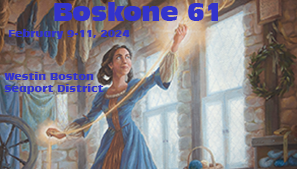The Stars are Also Fire
by Poul Anderson
Tor, 1994 412 pages, $22.95 hb. $6.99 pb.
Poul Anderson is one of the best science-fiction writers alive, but late in his life he is surpassing everything he has done before. In a word, The Stars Are Also Fire is magnificent.
Anderson has not always been strong in plot integration, but in this novel he does a masterful job of tying together two threads of alternating chapters. Both stories relate to his previous novel, Harvest of Stars, one of them being placed before and one after its events. The first thread tells the story of Dagny Beynac, Anson Guthrie’s granddaughter, who plays a major role in achieving independence for the Moon. In the second, placed centuries later, a Lunarian dignitary named Lilisaire sends two Terran operatives in search of a secret which Beynac’s sons had discovered, and which may be the last chance for the Lunarian race to avoid assimilation and possible extinction.
The theme of the book is liberty, individualism, and questing against authority, submission, and stability. In contrasting the two, Anderson pits liberty not against the worst that totalitarianism can be, but against its best: the Teramind, a nearly godlike intelligence arising out of the cybercosm, the network of machines which individually are sentient. The cybercosm abhors violence, seeks the best for mankind, and lets people feel that they are indeed free; but it insists on being in control, on not allowing any ventures which would put humans beyond its reach. The Teramind’s human representative is Venator, a computer-linked hunter who pursues Lilisaire’s agents throughout the book like a space-traveling Javert. His adversaries, space pilot Ian Kenmuir and political activist Aleka Kame, have no experience with intrigue and are reasonably satisfied with the system; but as they find themselves hunted for making perfectly legal attempts to discover information, they realize that something is amiss in the world.
The novel is extremely rich in detail; it burns not with page-turning intensity but with the glow of a vast, starlit sky. Many subsidiary characters and themes contribute to its richness. The issues are subtle; there are no overt villains, only people clashing over intensely held values. This is the kind of book which does not let you either rush ahead or stop. Step by step, it leads to culminating chapters of overwhelming emotional intensity. The final confrontation is not one of physical force or even scientific rivalry, but of ideas, of two irreconcilable views of life.
The Stars Are Also Fire is one of the finest science fiction books ever written. Together with Harvest of Stars, it provides a detailed vision of the future and a grand expression of the hope for freedom.
This review copyright 1994 by Gary McGath






